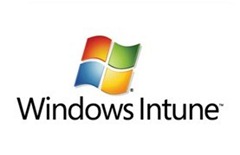by Dmitry Kirsanov
8. February 2012 05:00
 How many products of major brands float under your radar, unnoticed and unevaluated? Perhaps Windows Intune is one of them, but if you are Windows system administrator – that’s the one product you should know about, whether you’re using it or not. So this post is about Windows Intune.
How many products of major brands float under your radar, unnoticed and unevaluated? Perhaps Windows Intune is one of them, but if you are Windows system administrator – that’s the one product you should know about, whether you’re using it or not. So this post is about Windows Intune.
More...
by Dmitry Kirsanov
14. November 2011 01:10
In one of the previous topics, I was showing how to deploy Windows 7 using Automated Installation Kit, or AIK. This time it’s more hardcore, and is about Windows Deployment Services.
Using Windows Deployment Services you can deploy your fine tuned Windows 7 image to hundreds of computers in a matter minutes. It’s not the most hardcore way of doing it, as I will show in SCCM course later, but still mind blowing if you are either haven’t heard about it before.
It’s not a rocket science though, so the whole lab is just 16 minutes. Very short indeed, but it contains even the installation phase.
Enjoy!
Deploying Windows 7 by Using Windows Deployment Services
by Dmitry Kirsanov
9. November 2011 11:20
Another aspect of corporate systems administration is ability to deploy anything and everything at once without even leaving your chair. In Windows world, we had that ability from Windows 2000 and it evolves with every new version of operating system.
One of the key tools to install the operating system itself is Windows Automated Installation Kit (AIK). Windows is using so called “answer file” to not ask you for things with known answers. And it’s not only serial number, user and computer name, but also partitions, drivers and other things that could take hours to install and configure otherwise.
As a potential scenario of deployment, imagine that you’ve just received a 100 new computers from hardware vendor. 100 brand new machines with no operating system installed, as you will use Windows 7 corporate – version which you can’t buy at local store. Your task is to install it as soon as possible – it’s Friday evening and you don’t want to waste your weekend on it.
So you prepare the image of one machine and deploy it on all other machines using local network. Very simple thing to do when you know what you are doing.
The following walkthrough lab is from the Microsoft Official Curriculum 6294A: Planning and Managing Windows 7 Desktop Deployments and Environments. It shows you how to create bootable media with image of your reference workstation and deploy it on other machines. Enjoy!
Deploying Windows 7 by Using Windows AIK
by Dmitry Kirsanov
26. September 2011 10:31
Yet another command line utility written to do some useful stuff in the background. This time it is about file synchronization.
It’s quite often that we need to make 2 directories in our local network in sync. For example, you may want to synchronize folders with photos, backup files or even production files of your web application between IIS web farm nodes.
This program utilizes the Microsoft Synchronization Framework, so basically it does very little apart from what Microsoft already provides. Personally, I am using it to pull backups from TFS server on daily basis and to synchronize shared folders among load balancing cluster of production web server. In both cases utility is running as Task Scheduler task and everything happens in background.
It doesn’t require installation, just unpack it to your utilities folder and it’s ready to go. It requires .NET framework 4 Client Profile in order to run. Another dependency is Microsoft Sync Framework 2.1 (Two components required - Synchronization and Provider Services).
FileSync.rar (114.45 kb)
Installation file, which will also install the prerequisites, such as .NET Framework 4.0 Client Profile:
FileSyncSetup.exe (4.42 mb)
by Dmitry Kirsanov
24. August 2011 22:48
Ok, here is another command line tool. This time - for developers who create software made of many components.
Imagine, you have a product which consists of main executable file and multiple dll files. And different people are working on these. And you are deploying it all on multiple machines and never know where it could be hiding. Maybe in some build directories, maybe somewhere else.
So this utility will find all instances of that file and replace with the newest one. Moreover, you can even select the older file, but all files will be replaced by the newest found. Well, there are parameters, of course.
As the searching for files is time consuming, the end result of this utility could be a batch file (.bat) which contains commands to repeat operation. It will take the same source file and put it to the same destinations as during the first run. That way, continuous replacing won't be a problem or take more than a couple of seconds.
So, here it is. Requires .net framework 3.5.
filereplace.rar (5,32 kb)
UPDATE 03/MAY/2016: Updated application to version 1.2.1 - fixed bug when file couldn't be found using the /d switch